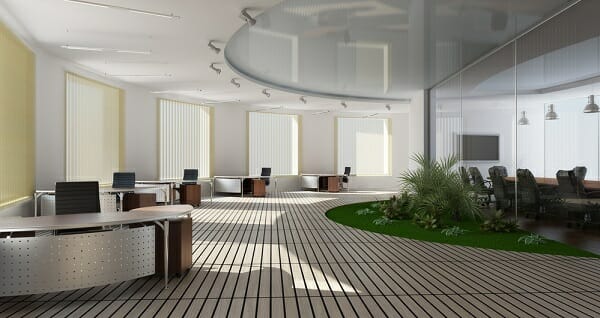Modernising the Workspace: Office Enhancements to Motivate Your Team’s Return

LINKS TO CONTENT
ToggleIn the wake of a global shift towards remote work, business owners now face the unique challenge of drawing their employees back to the office. The task requires more than simply reopening doors—it demands redefining and modernizing the workspace to meet evolving expectations. Comfort, aesthetics, flexibility, and technology are essential to this new office equation. This article explores how business owners can leverage these critical areas by creating office enhancements. These should motivate, inspire, and ultimately draw the workforce back in.
We will delve into the ways our working habits have shifted and how office design affects productivity. We will look at the role of technology in modern collaboration and discover how wellness-centric design can make a difference. Join us on this journey towards understanding how you can revolutionize your workspace and lead your team back to the office.
The COVID-19 pandemic drastically altered our perception of work, accelerating the adoption of remote and flexible work policies. Employees have grown accustomed to the comfort and flexibility of working from home. Their expectations for the office environment have shifted accordingly. The new normal demands workplaces that offer comparable comfort. They must offer flexibility and a distinct value proposition that cannot be found at home. This could be the opportunity for office enhancements, with seamless collaboration, state-of-the-art facilities, or a supportive community that enhances job satisfaction. Recognizing and embracing these shifting expectations are the first steps towards modernizing your workspace.
Never underestimate the influence of aesthetics on productivity. A workspace that inspires creativity reduces stress, and fosters focus can significantly boost employee morale and output. Consider adopting open floor plans that encourage collaboration, use colours that enhance mood and energy, incorporate artwork that stimulates creative thinking, and ensure the office is well-lit with natural light. The latter is particularly crucial—studies show that exposure to natural light can improve mood, reduce fatigue, and enhance mental health, thereby boosting productivity. To bring about a workplace renaissance, pay close attention to the look and feel of your office.
Integrating natural elements within office design can significantly influence employees’ well-being and productivity. Biophilic design, which involves bringing elements of the outdoors inside, can reduce stress, improve cognitive function, and enhance mood. Consider incorporating live plants, natural light, water features, and organic materials in your office design. Such a strategy can turn the office into a refreshing and inspiring space, encouraging employees to return.
Modernizing your workspace doesn’t stop at aesthetics. Technology plays an equally significant role in making the office an attractive place to work. As we navigate the hybrid work era, it is vital to integrate technology solutions that enable seamless collaboration between in-office and remote employees. Think digital whiteboards, teleconferencing tools, and project management software.
Investing in a high-performance work monitor like Dell u2414 can enhance productivity, offering speed, reliability, and the ability to handle complex tasks efficiently. Add in secure, high-speed internet connectivity. Leveraging the right technology can help maintain the collaborative spirit of the office while accommodating those who choose to work remotely some of the time. It sends a message to your employees that your office is not stuck in the past but is forward-thinking and ready to adapt to the evolving business landscape.
Employees are seeking workplaces that prioritize their well-being. To cater to this, consider partnering with a commercial HVAC company like HTS New England to ensure optimal indoor air quality, an essential aspect of office wellness. Equally important are ergonomic furniture, access to nutritious food options, and designated relaxation spaces. Employees are more likely to return to the office if they see their health and comfort are taken seriously. Through initiatives like these, businesses can show their commitment to employee wellness while also providing an environment that encourages productivity and satisfaction.
As many employees have grown accustomed to the benefits of remote work, creating a flexible office model that accommodates both remote and in-person work is essential. The office should offer spaces that facilitate both focused individual work and team collaboration. Hot-desking or activity-based working models can be beneficial, allowing employees to choose where and how they work based on their tasks. This flexible approach can make the office more appealing to those who value a work-life balance.
Adapting your workspace to modern needs is not a one-time event—it’s a continual process. As business owners, it’s important to foster open communication channels to gather employee feedback on what’s working and what can be improved. Regularly reevaluating your strategies and adding office enhancements, creates an enticing and effective place for your team. This adaptive mindset is the key to sustaining a successful and inviting office environment.
As an experienced business and finance writer I understand the corporate landscape and the driving forces behind it. Over the years I’ve shared my insight and knowledge with key industry publications and dedicated my time to showing how business leaders can make their organisations more effective.
